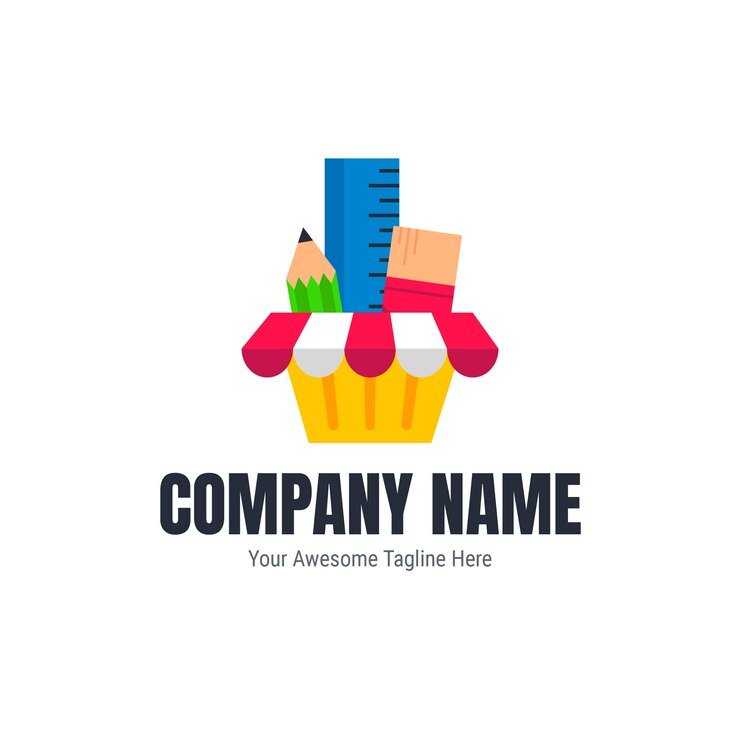Logo Design Ideas for Small Businesses

Creating a logo for a small business is an essential step in building a strong brand identity that will set you apart in a competitive market. A well-designed logo not only represents your company visually but also communicates your brand’s values and personality. Whether you’re starting a new business or rebranding, a unique logo is crucial for recognition and trust. In this guide, we will explore logo design ideas that are perfect for small businesses, covering design styles, tips, and important factors to consider to ensure that your logo makes a lasting impact.
Key Elements of Logo Design for Small Businesses:
- Understand Your Business and Audience
- Know Your Brand: The first step is to understand the core of your business. Your logo should reflect your company’s mission, vision, and values.
- Target Audience: Knowing your audience is key to designing a logo that appeals to them. Consider age, interests, and location when thinking about the style and color scheme.
- Simplicity is Key
- Minimalist Design: Simple logos are easier to remember and reproduce across various media. A clean and straightforward design is often more effective for smaller businesses that need to maximize visibility.
- Timeless Appeal: A simple logo design tends to have a longer shelf life. Focus on creating something that won’t easily go out of style.
- Reflect Your Industry or Niche
- Industry-Specific Icons: Use subtle references to your industry through icons or symbols. For example, a food business might use a spoon or fork, while a tech company might opt for a more abstract symbol.
- Industry Color Trends: Certain colors are associated with specific industries, like green for eco-friendly businesses, blue for tech, or red for food and beverages. These can help communicate what your business is about even before your customers read the name.
- Choose the Right Typography
- Readability: When choosing fonts, ensure they are legible, even at smaller sizes. Avoid overly complex fonts that may be difficult to read on business cards or websites.
- Font Style: The typography you select should reflect the personality of your business. Serif fonts often convey tradition and reliability, while sans-serif fonts are clean and modern.
- Create a Unique and Memorable Design
- Distinctiveness: Ensure your logo is distinct from competitors. A unique logo stands out and helps build a memorable brand image.
- Avoid Overused Symbols: Stay away from cliché symbols in your industry. For example, a coffee shop should avoid using a simple coffee cup image unless it’s creatively designed.
- Incorporate Meaningful Colors
- Psychology of Colors: Different colors evoke different emotions. Blue signifies trust and professionalism, green symbolizes nature and sustainability, and red conveys energy and excitement.
- Complementary Colors: Choose colors that complement each other and create a harmonious look. Too many conflicting colors can make the design look chaotic.
- Versatility and Scalability
- Multiple Platforms: Your logo will appear on various platforms, from your website and social media to business cards and packaging. Ensure it looks good in both small and large sizes.
- Black and White Versions: Your logo should also work in black and white for situations where color isn’t available, ensuring it remains effective and legible.
- Logo Variations
- Different Layouts: Create different versions of your logo, such as a full version with text and a simplified version (icon-only) that can be used on social media or as a favicon.
- Responsive Logo: Consider designing a responsive logo that adapts to different screen sizes and devices, ensuring consistency across digital touchpoints.
- Seek Feedback and Make Adjustments
- Test Your Design: Show your logo to others—whether team members, friends, or potential customers—to get feedback.
- Refinement: Based on feedback, refine the logo design to ensure it’s the best representation of your brand.
- Get Professional Help
- Hire a Designer: While DIY logo tools are available, hiring a professional designer ensures that your logo is original, high-quality, and properly reflects your business.
- Collaborate: Work closely with your designer to communicate your brand vision, goals, and preferences, ensuring the final logo is something you’re proud of.














